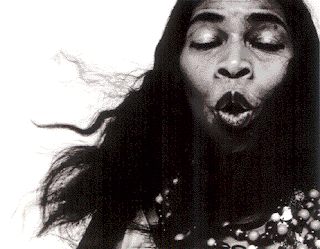"Everyone wanted to be photographed by him...they wanted to see what he saw in them." John Lahr
His work defined intimate. When you look at the photographs of the legendary Richard Avedon you are drawn into the subject- be it the fashion images that would become iconic or the faces and personalities of history, culture and political change that he recorded.
Avedon's fashion work is instantly recognizable and he defines what fashion photography should be, an art. In the 1957 film Funny Face Avedon's influence on the fashion world was celebrated. He would contribute to the opening photography and it is believed that the Fred Astaire character was loosely based on Avedon himself.
Fashion may have been how he made his name and his living


1947 Dior 1957 Cardin
but it was the people of his times and the lives that were seldom revealed that really motivated Avedon. His work capturing the humanity of the history of the Civil Rights Movement,the American West, the Brandenburg Gate, and politics reveal the "who" of late twentieth century America.
"I have a white background; I have the person I'm interested in and the thing that happens between us."
Marian Anderson
This month a new book, Performance: Richard Avedon
chronicles those decades through the extraordinary eye that revealed in silence the changes and players of the time.
Also this month in a timely exhibit this election season, "Richard Avedon Portraits of Power" will be on exhibit at the Corcoran in Washington D.C.
Avedon was continually drawn throughout his career to the people who lived their lives not necessarily publicly but who were often the power force of history and society and influenced their time. The Family,1976 chronicled the Presidential campaign through the 69 images of the elite movers and shakers of that era as seen in Rolling Stone Magazine.
 The Chicago Seven
The Chicago SevenSelected original prints from the new book will also be on view in at:
-Pace/MacGill -November 14-January 3 ,NYC
Fraenkel Gallery Nov.6-Dec. 27 San Francisco
Richard Avedon's work will be the subject of a major exhibit in the fall of 2009 at The San Francisco Museum of Modern Art
"The endless fascination of these people for me lies in what I call their inward power. It is part of the elusive secret that hides in everyone, and it has been my life's work to try to capture it on film. The mask we present to others and, too often, to ourselves may lift for only a second - to reveal that power in an unconscious gesture, a raised brow, a surprised response, a moment of repose. This is the moment to record." Yousuf Karsh
 Yousuf Karsh Self Portrait 1962
Yousuf Karsh Self Portrait 1962
Richard Avedon's lens recorded grace and elegance in his fashion work and the humanity and psyche of those who played on the stage of American history in the late twentieth century. Yousuf Karsh's lens on the other hand recorded biographies . The renowned portraitist photographed the most famous people from politics to the stage from 1940-1990. Karsh approached his work as a biographer, interviewing his subject extensively before photographing them. In so many instances the images that Karsh took became the defining image of the personality.
 1956 Audrey Hepburn
1956 Audrey HepburnKarsh's portraits give access to lives that were private...
 1957 Ernest Hemingway
1957 Ernest Hemingwaychanged history...
1941 Winston Churchill

...helped to define their age...
 Muhammed Ali 1970
Muhammed Ali 1970and remain icons
 Sophia Loren 1981
Sophia Loren 1981The faces of Yousuf Karsh's work go deeper than just the "face" that the subject wanted seen...the face is real and so is the story told within it.
In celebration of the 100th anniversary of the birth of acclaimed portrait photographer Yousuf Karsh Boston's MFA is currently exhibiting "Karsh 100 a Biography in Images"
through Jan. 19 Boston




